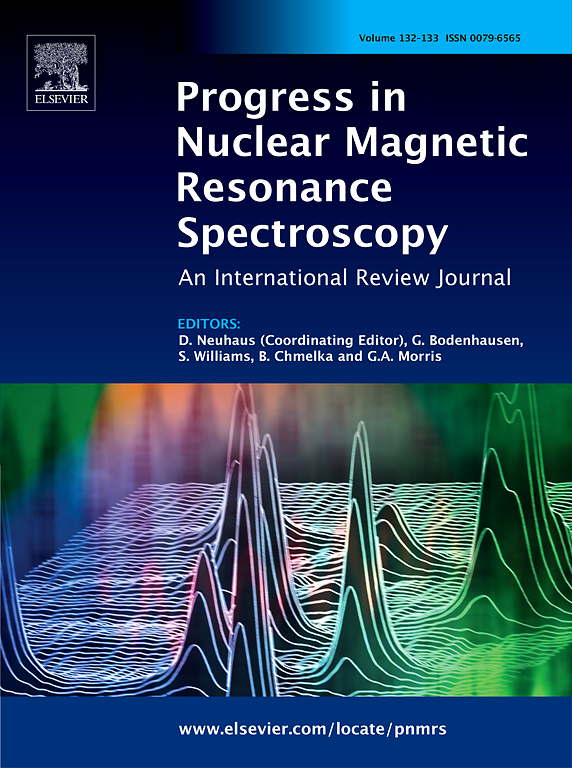Machine learning in NMR spectroscopy
IF 8.2
2区 化学
Q2 CHEMISTRY, PHYSICAL
Progress in Nuclear Magnetic Resonance Spectroscopy
Pub Date : 2025-07-01
DOI:10.1016/j.pnmrs.2025.101575
引用次数: 0
Abstract
NMR spectroscopy is a versatile technique for studies of molecular structures, dynamic processes, and intermolecular interactions across a broad range of systems, including small molecules, macromolecules, biomolecular assemblies, and materials in both solution and solid-state environments. As the complexity of NMR studies continues to pose challenges for practitioners, the integration of machine learning is recognized as a promising research direction for improving data acquisition, processing, and analysis. Here, we summarize recent findings in this area, highlighting common applications such as signal detection, chemical shift assignment, structure determination, chemical shift prediction, non-uniform sampling reconstruction, and denoising. For each of these applications, we discuss machine learning methods, design choices, and key publicly available data repositories. We conclude by identifying major trends and emerging directions at the intersection of machine learning and NMR spectroscopy that could help advance research in the field.

核磁共振波谱中的机器学习
核磁共振波谱是一种通用的技术,用于研究分子结构、动态过程和分子间相互作用,研究范围广泛的系统,包括小分子、大分子、生物分子组装和溶液和固态环境中的材料。随着核磁共振研究的复杂性不断给从业者带来挑战,机器学习的集成被认为是改善数据采集、处理和分析的一个有前途的研究方向。在这里,我们总结了该领域的最新研究成果,重点介绍了信号检测、化学位移分配、结构确定、化学位移预测、非均匀采样重建和去噪等常见应用。对于这些应用,我们将讨论机器学习方法、设计选择和关键的公开可用数据存储库。最后,我们确定了机器学习和核磁共振波谱交叉的主要趋势和新兴方向,这有助于推进该领域的研究。
本文章由计算机程序翻译,如有差异,请以英文原文为准。
求助全文
约1分钟内获得全文
求助全文
来源期刊
CiteScore
14.30
自引率
8.20%
发文量
12
审稿时长
62 days
期刊介绍:
Progress in Nuclear Magnetic Resonance Spectroscopy publishes review papers describing research related to the theory and application of NMR spectroscopy. This technique is widely applied in chemistry, physics, biochemistry and materials science, and also in many areas of biology and medicine. The journal publishes review articles covering applications in all of these and in related subjects, as well as in-depth treatments of the fundamental theory of and instrumental developments in NMR spectroscopy.

 求助内容:
求助内容: 应助结果提醒方式:
应助结果提醒方式:


